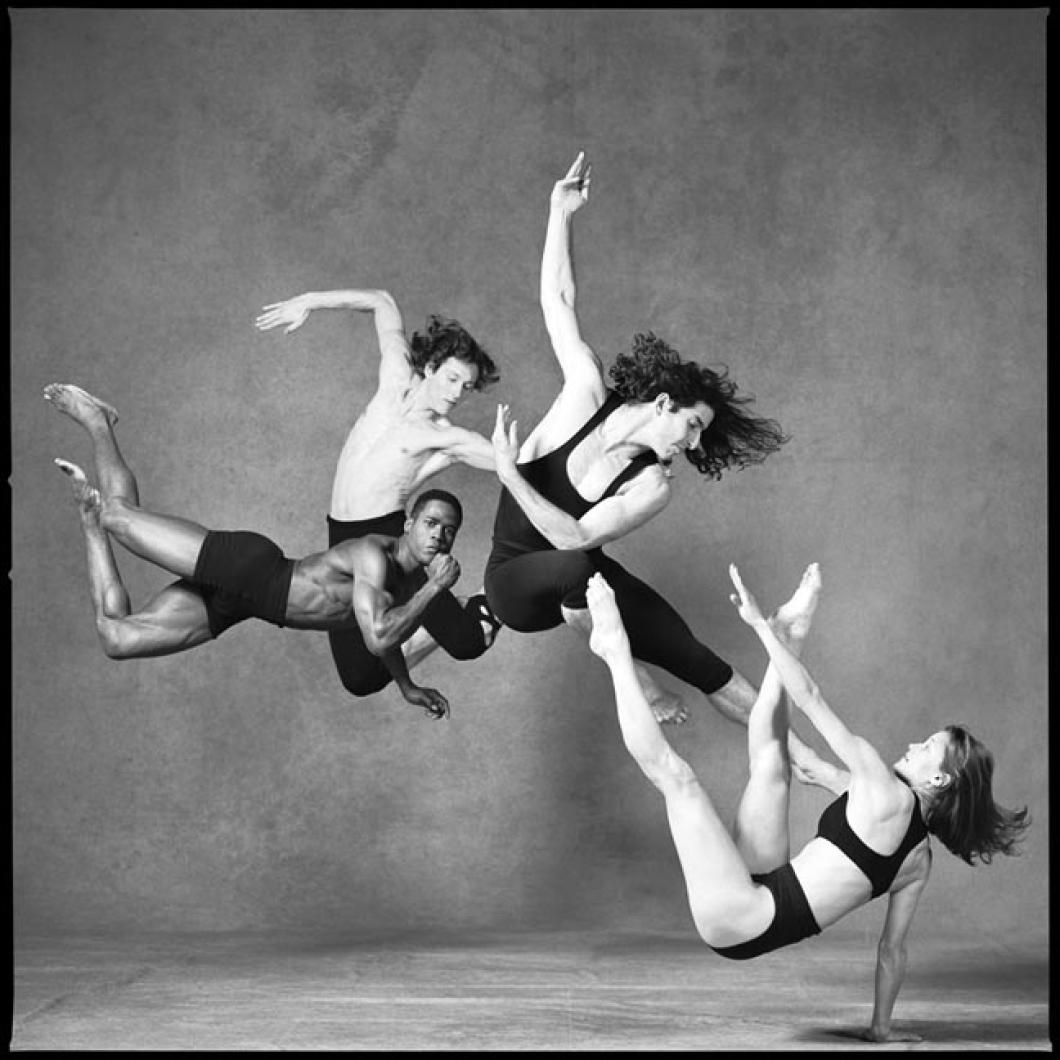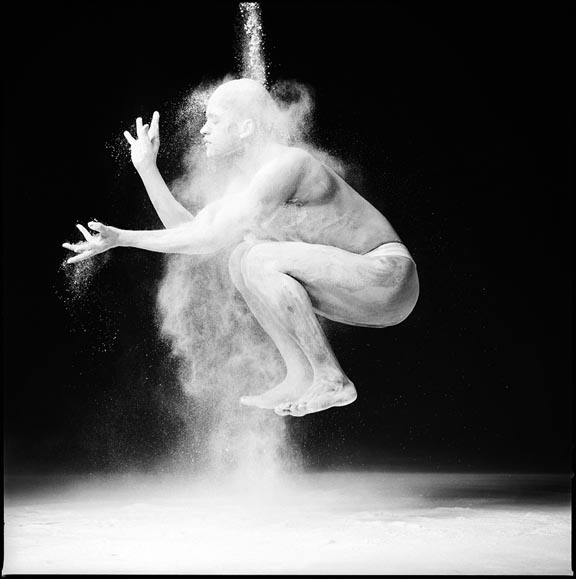Lois Greenfield is constantly challenging what’s in front of her. As a result, her photographs are beyond human perception. The eye can only observe so much, and it is Ms. Greenfield’s passion to unveil the potential of the impossible.
To Ms. Greenfield, there’s nothing interesting in capturing what we can see; for her, it’s all about taking risks. “My motivation to take these pictures is not to have the photograph be a product of a layout or something like that,” Ms. Greenfield said, speaking to the Gazette from her summer home in Truro. “What fascinates me about exploring movement is I don’t know where it’s going to go and the end product is unknown. I don’t know where I’ll end up.”
Ms. Greenfield will be speaking at the Yard on Saturday about her career in movement photography, specifically in the world of dance. Her lecture is the first of a series hosted by the Yard’s new YardArts Institute, hosting workshops for the curious adult. Bridgman/Packer Dance Company, who use projected imagery on dancers, also will be performing this weekend.
Ms. Greenfield’s photographs appear to defy gravity, as dancers appear to hang in the air with ease and grace or float through space like wisps of cotton.
“I really want to create something where it’s the unique product of dance and photography,” Ms. Greenfield said. “I don’t photograph choreography as much as I make my own. I use the dancers to explore different themes out of my own imagination.” She merges dance and photography with a guillotine effect of slicing a moment into a sliver of time, something beyond the blink of an eye.
“When I talk about [my pictures] and people see how simple they are, that’s a revelation, that you don’t really need a lot of forethought or complicated setups, it’s basically just people,” she explained. “The pictures are spontaneously generated.”
Ms. Greenfield started as an outsider in the dance world, something she considers to work in her favor. “I’ve been a dance photographer for 35 years but I wasn’t interested in dance before that,” Ms. Greenfield explained. “I was a photojournalist. So my perspective on dance is different.”
After graduating from Brandeis University, Ms. Greenfield freelanced for publications in Boston and New York, and finally stumbled into dance. “My allegiance is to photography and my mission was how do I merge dance with photography without putting photography at the service of the dance?” she said. “There’s a dynamic relation, an obvious relationship of the photogeneity of dance.”
But it was her 1982 session with David Parsons and Daniel Ezralow, then dancing for the Paul Taylor Dance Company in New York, that solidified her technique. “It was all chaotic but revelatory for me,” Ms. Greenfield explained of her assignment from the Village Voice. “I was trying not to capture any particular choreography or express anything, but the dancers were finding out how their bodies work.”
The results were startling for her. “That created a new aesthetic for me, it was very liberating,” she said. “I didn’t know if I knew I was on to something when I did it, [but] the response was so great.”
Ms. Greenfield had inadvertently created her signature aesthetic. Ms. Greenfield has gone on to photograph dancers from Alvin Ailey, Martha Graham, Paul Taylor, American Ballet Theater, David Parsons, Sean Curran and many more, as well as working in fashion and sports photography.
Her collaborations with dance companies were showcased in two books, Breaking Bounds and Airborne, both exhibiting highlights from her portfolio. More recently, she worked with the Australian Dance Theatre in creating a live interaction of photography and dance where she shot the dancers performing live, projecting the images simultaneously to the dancers.
“It was an unexpected thing in my life that I never thought about and was initially terrified,” Ms. Greenfield said of one of her more rewarding experiences. “That proved to be a fabulous experience.” She and the company toured the world with their project, HELD, performing from the Sydney Opera House to the Theatre de la Ville in Paris.
“I think I’m fascinated with the emotional and narrative potential of movement,” Ms. Greenfield said. “My images end up being floating and still, but nonetheless they are taken from movement. I love sculpting with dancers, it’s like classical sculpture in a way.”
Ms. Greenfield starts a session by having the dancers show her something, maybe a phrase of movement or a series of jumps, but always moving. “It has to come from their body, it has to be fresh and spontaneous,” she explained. If the freshness and spontaneity has peaked without getting the shot, Ms. Greenfield moves on. “It’s not about the execution of great jump or pose. Everything is movement in transition, often falling or rising, but never a static pose.”
Her interests lie in the metaphorical potential of movement, what stories can be told in the blink of an eye. Or in the case of Ms. Greenfield’s work, what the eye cannot see. She takes her pictures at a 2000th of a second; her work transcends possibilities.
“I’m looking for something that defies logic,” she said. “The picture has to have some mystery or internal contradiction to it. That’s what makes a successful picture.”
Ms. Greenfield’s photography is so logic-defying that she has been accused of altering her images with computer programs on multiple occasions, as her dancers suspend in the air at heights and shapes that seem impossible to the average person. Ms. Greenfield makes it possible.
“You cannot see it as a fleeting gesture, there’s a surrealism in that a moment we can’t see becomes solidified as a sculpture. All these paradoxes intrigue me.”
Instead of sequences of movement on stage, Ms. Greenfield captures sculptural moments in the air. Dancers are not used to being framed in this manner, and as a result sometimes they refine their gestures that otherwise may be invisible on stage, she explained. “It’s hard for them to do that but it gives them a nice challenge to shape their own visual identity and claim their unique attributes,” Ms. Greenfield said.
Dancers have credited her not only with the way people photograph dance but what dancers can physically accomplish through new forms of expression. “For dancers it helps expand their creativity,” she said. It glorifies their uniqueness.”
Lois Greenfield will be speaking on Saturday at 5:30 p.m. at the Yard off Middle Road in Chilmark. Bridgman/Packer Dance will be performing Friday and Sunday. For details, call 508-645-9662.







Comments
Comment policy »